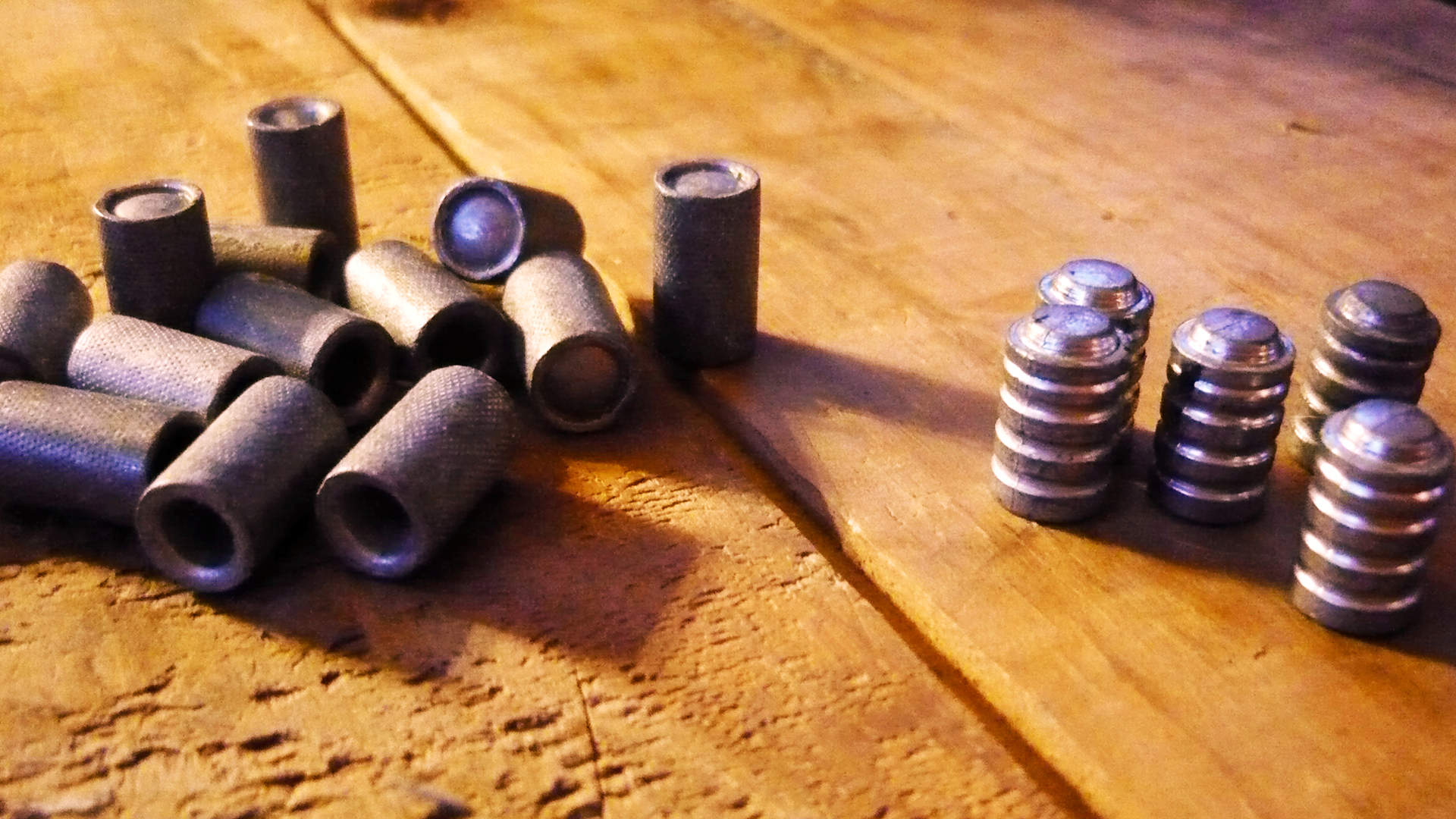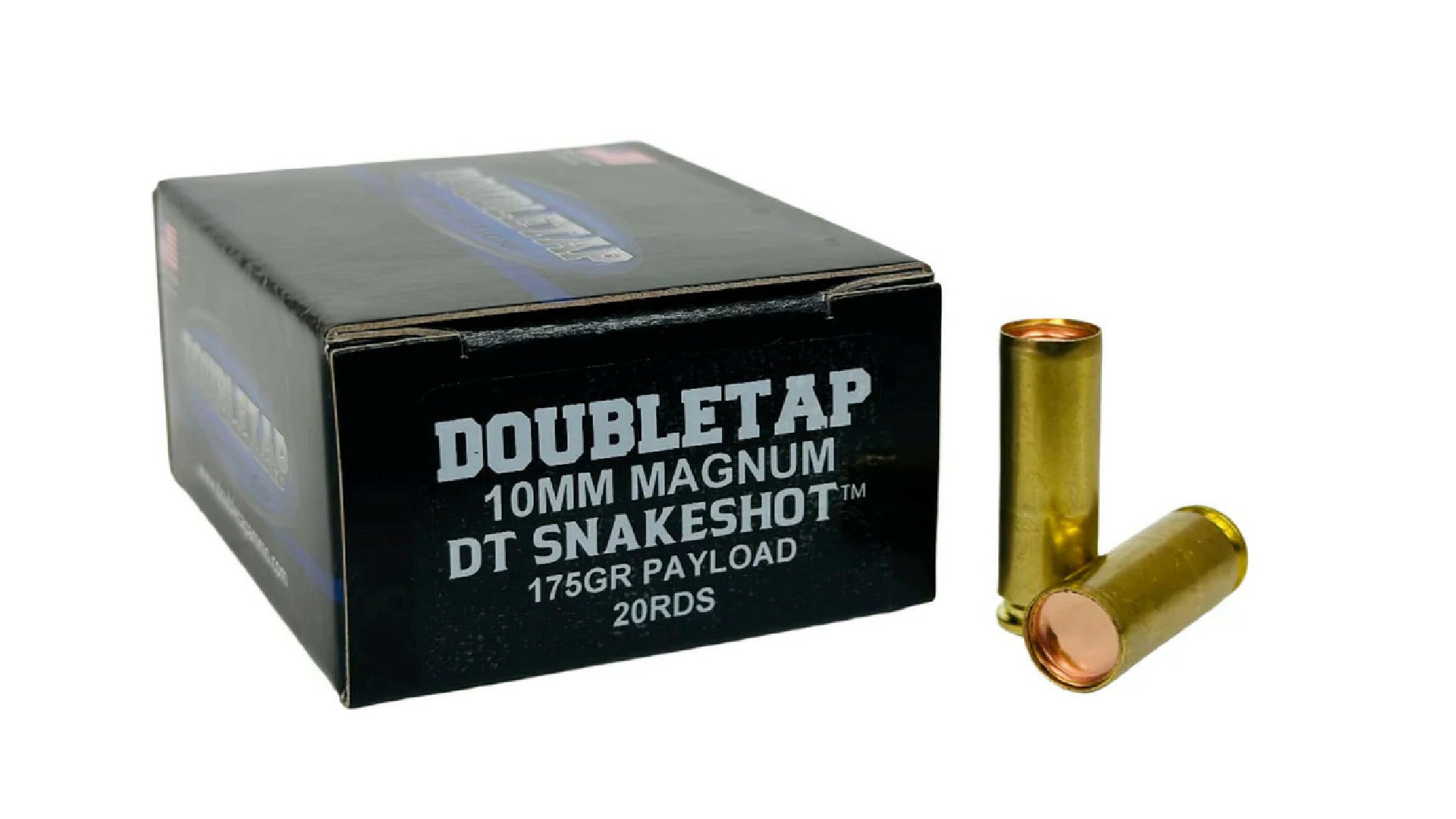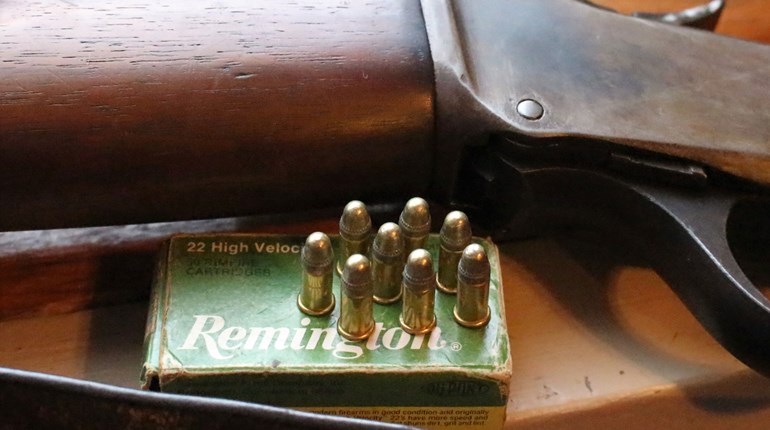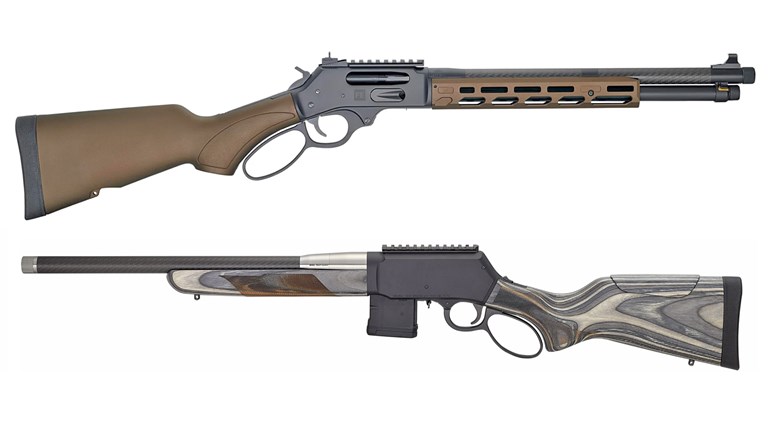
On a rainy morning in the Cotswolds of southwestern England, Mike Robinson and I—along with his stalking dogs Millie and Sorrel—heard the unmistakable sound of two fallow bucks waging war upon one another. The dogs froze, and Mike and I crept slowly over the lip of the dell, trying to get a glimpse at the combatants. His attention, and our mission, turned instead to a yearling buck—known as a ‘pricket’—which stood to the side, facing us. “Between the eyes,” came the order from Robinson, and the new Savage 110 PPR settled into the Viper Flex quad sticks. Seconds later, a Hornady CX bullet did its job, resulting in an instantaneous kill.
 Coated and uncoated lead projectiles for revolvers.
Coated and uncoated lead projectiles for revolvers.
Robinson is a world-class chef, highly successful restaurateur and host of Farming the Wild TV show; he also helps manage over 20,000 acres in the Costwolds area, harvesting fallow deer for his Deer Box company which provides restaurants in the U.K. with venison. Our hunt together was part of the deer culling/management operation, and Mike adheres to strict rules. His venison must be handled properly, and he insists on head/neck shots to maximize the amount of edible venison. Additionally, Mike and his colleagues insist in the use of lead-free ammunition, specifically the Hornady CX bullet in the Outfitter ammo line. This lead to a great discussion on one of our truck rides, regarding the differences, pros and cons of lead and lead-core ammunition versus the copper monometal stuff.
 The .45 Colt is well-served by both jacketed and lead projectiles.
The .45 Colt is well-served by both jacketed and lead projectiles.
Mike’s decision—a personal one—to choose lead-free projectiles is based upon his desire to eliminate any chance of lead contamination in the venison, assuring the consumer that their meal won’t contain even a trace of a lead projectile. Here in the United States, the ban on the use of lead projectiles seems to be gaining a head of steam, though I'm not completely certain that the case for banning the use of lead is as compelling as it may seem.
Lead has long been our go-to material for projectiles, as it is malleable enough to be easily worked, yet hard enough to maintain its shape during the violent process of being fired from a rifle, handgun or shotgun. Lead has been used as a material for projectiles for nearly two millennia, as the Roman soldiers would use lead for their slings. Though lead makes a great projectile, it is a toxic material—not just to the recipient of the projectile—to humans and animals alike. Lead poisoning, or lead toxicity, is a reality, and contamination can result in death.
 The Nosler Partition is an absolute classic lead-core bullet.
The Nosler Partition is an absolute classic lead-core bullet.
Lead was used for early plumbing—with less than salubrious effects—and for writing tablets, but our focus will be on the projectiles used for firearms, from the earliest fowling pieces, to the high-precision rifles capable of routinely hitting the target at distances in excess of a mile (albeit the lead core is wrapped in a neat copper jacket). I am old enough to remember when it was legal to hunt waterfowl, over water, with lead shot, though I was hunting long when all that changed. I fully understand and agree with the concept of minimizing the pollution of our sensitive waterways and wetlands, and the use of steel, bismuth and other non-toxic materials makes absolute sense.
Our rifle and handgun projectiles have long been lead based, whether in the form of the pure lead bullets so popular in the cartridges of the late 19th century, or in the copper-jacket/lead-core projectiles which dominated the 20th century. One of the characteristics of lead and jacketed lead bullets was their tendency to expand prematurely on larger game animals—especially when of lighter weights in smaller calibers—and many steps were taken throughout the 20th century to mitigate that fact. From the “locked” jackets of the Remington Core-Lokt, to the dual cores of John Nosler’s Partition, to the molecularly fused jacket/core of the Jack Carter’s Trophy Bonded Bear Claw, the desire to slow the rapid expansion of a traditional cup-and-core bullet hasn’t faded at all.
 The Barnes TSX recovered from Cape buffalo.
The Barnes TSX recovered from Cape buffalo.
Jacketed bullets—especially the boattail variants—have a nasty habit of coming apart upon impact, more so when the impact velocities are high. Randy Brooks, then owner of Barnes Bullets, had the brilliant idea of removing the lead core altogether, resulting in a projectile consisting entirely of copper gilding material. His Barnes X led the way for the copper bullet revolution, blazing the way for an entire market; nearly every major manufacturer of projectiles offers some sort of lead free, copper monometal projectile. Barnes has revised their initial design, resulting in the TSX, TTSX and LRX bullets, Hornady has offered the GMX and CX projectiles, Federal has their Trophy Copper, Remington has the Core-Lokt Copper and so-on and so-forth.
 Remington Core-Lokt was an early attempt at keeping a jacketed bullet together.
Remington Core-Lokt was an early attempt at keeping a jacketed bullet together.
Then there are the smaller, boutique companies who offer lead-free hunting projectiles. Among my favorites in this department are Woodleigh Bullets of Australia, Peregrine Bullets from South Africa and McGuire Ballistics of California (where the use of lead projectiles has been banned). Each has their own application, with Woodleigh’s Hydrostatically Stabilized Solid being one of the finest dangerous-game bullets available, the Peregrine Bushmaster is a flat-nosed expanding bullet perfect for thick-skinned game, and their Plainsmaster is a spitzer boattail perfect for longer shots on game. McGuire’s Copper Rose is a sleek, nasty projectile, perfect for just about any situation North American hunting could present. Between these boutique projectiles, and the mainstream models named earlier, I’d say a big-game hunter could spend his or her days afield with confidence that their bullet will not let them down. But, the copper projectiles do come at a price.
 Peregrine's all-copper projectiles are fantastic on any game animal.
Peregrine's all-copper projectiles are fantastic on any game animal.
Copper projectiles are more expensive to produce than their jacketed lead counterparts, and the consumer will see the higher price tag at the register. Looking at the popular .308 Winchester, using the middle-of-the-road 165-grain bullets, you pay a street price of about $2.75 per round for a reputable copper projectile. If you want a premium bonded-core soft point, you can expect to pay the same, perhaps even a bit more. But if a simple copper jacket/lead core bullet is suitable for your hunting needs, you can cut that price by 30 percent or even more. And let’s be honest, for the average hunter pursuing whitetail deer, black bear or feral hogs, a good old cup-and-core like the Sierra GameKing, Federal PowerShok, Hornady Interlock, Winchester Power-Point and Remington Core-Lokt can assuredly fill the freezer.
In the terminal phase, I think the lead-core bullets have a more “immediate” energy transfer, or perhaps I should say that sometimes a copper bullet doesn’t show the impact on a heart/lung shot the way a lead softpoint does. Is this a consistent trait? No, but it has happened to me in a number of different situations, with different brands, on different animals. That said, some of the most dramatic one-shot kills on animals as large and tough as Cape buffalo have come from copper projectiles.
 Swift A-Frame bonded core projectiles recovered from game animals around the world.
Swift A-Frame bonded core projectiles recovered from game animals around the world.
Is lead dead? No folks, certainly not. I can’t imagine a world without the Swift Scirocco II, Nosler’s Partition and AccuBond, Hornady’s ELD-X and Federal’s Trophy Bonded series. Those Sierra GameKing hollowpoints that have accompanied me on so many adventures around New York State are dear to me, and while I do understand the issue of lead toxicity, I feel that the miniscule amount of lead punched into the ground by hunters in the field doesn’t amount to anything.
A shooting range, where fired projectiles are concentrated, should require some level of reclamation and proper handling of contaminants. In California, where the concern for the endangered condor consuming lead from the viscera of an animal taken, the lead ban might make sense, but it seems to be a political talking point around the country. Here in New York, the effort has been made to ban the use of lead ammunition on our public lands, including the enormous Adirondack and Catskill Parks, with the insinuation being that the water supply for New York City is at risk of contamination. Um, I feel that among the multitude of possible contaminants in the New York City watershed area, the lead projectiles left behind by hunters wouldn’t move the needle. It reeks of a political control move.
 The new Winchester 21 Sharp gives classic rimfire performance in a lead-free projectile.
The new Winchester 21 Sharp gives classic rimfire performance in a lead-free projectile.
Of late, the ban on lead ammunition has led to the development of cartridges specifically designed around copper bullets, namely Winchester’s new 21 Sharp. Roughly mimicking the performance of our venerated .22 Long Rifle—but with a copper bullet and a slightly smaller bullet diameter—the 21 Sharp offers rimfire shooters a lead-free choice in that highly popular performance range.
I don’t mind choosing a lead-free bullet, not in the least. I do, however, have an issue with the prohibition of a useful, affordable bullet material, in a manner which seems to be based on political motivation. Just as the emissions from our vehicles and power plants are carefully regulated, the handling of lead does require some forethought and common sense. As an avid reloader, I take precautions during the handling of lead-based projectiles to minimize the possibility of lead absorption through my hands by not touching my face, eyes, mouth, etc., and washing my hands vigorously after each reloading session. In over 30 years of reloading, I haven’t noticed any symptoms of lead toxicity or poisoning, and that includes the casting of lead projectiles, loading pure lead projectiles, and handling thousands of cup-and-core rifle and pistol projectiles.
Copper projectiles are here to stay, there is no doubt about that, and I’m glad to have them as an option, but I am not abandoning my favorite lead-core projectiles in any way.



































